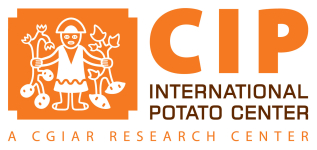In Southeast and South-Asia, CIP-related varieties cover 5% (164,000 ha) of the of the total area planted to sweetpotato (3.6M ha).
Published on: April 30, 2019, Submitted by Claudio Proietti on: April 10, 2019, Reporting year: 2018
This study documents the release and adoption of improved sweetpotato varieties in eight major producing countries in Southeast, South, and East Asia. Data on varietal release shows that over a total of 434 varieties released, 195 (45%) are adopted and cultivated; 45 of the 434 are CIP-related varieties. In 2015, sweetpotato cultivated area was 3.6M ha and 88% was planted to improved varieties. 5% (164,000 ha) of this area was planted to CIP-related varieties.
Results – Sweetpotato Adoption 2015 Area (ha) and share of improved and CIP-related varieties
STORY FOR COMMUNICATION USE
In close collaboration with NARS, international agricultural research centers have greatly contributed to the development and release of improved varieties in Southeast, East, and South Asia. During the Green Revolution (1960-2000), breeding programs strongly focused on high-yielding varieties to combat undernourishment. Thereafter, global challenges such as climate change, related biotic stresses, and the awareness of the importance of micronutrients in rural diets influenced breeding objectives that progressively included traits related with enhanced crop resilience and nutritional value.
Since the start of documenting sweetpotato varietal release, NARS have released a total of 434 varieties in the study region. China is by far the country with the most releases (236). In other countries, such as Philippines (32), India (31), Vietnam (19), Bangladesh (13), and Nepal (0), relatively few/no varieties have been released. Of those total releases, about 45% have found their way onto the farmers’ fields. In the past 20 years, breeding programs, mostly in China and India, increasingly considered resistance to biotic stresses related with climate changes (i.e. nematodes weevils, root rot, fusarium wilt, black spot, bacterial wilt, virus) as main objectives.
In 2015, the sweetpotato area in the study region was 3.6M ha and China accounted for 79% (2.8M ha) of the total. Overall, 88% of the area was planted to improved varieties but the situation was very different across countries (e.g. China 100%; Nepal 14%; Bangladesh 6%).
CIP has contributed to the development of 45 improved varieties which is 10% of the total releases. 60% (27) of the released varieties have resulted in adoptions. In terms of area, CIP-related varieties were planted to about 164,000 ha which was about 5% of the total area. China accounts for most (71%) of total area cultivated to CIP-related varieties. However, this only represents 4% of total area in China. In Vietnam, CIP has made an impact as well. Here, 20% of the total area is planted to CIP-related varieties. In other countries, CIP’s impact in terms of area is marginal or not existing, which is the case in India, Philippines, and Papua New Guinea.
ELABORATION OF IMPACT STATEMENT
This study documents release and adoption of improved sweetpotato varieties in eight major sweetpotato producing countries in Southeast, South, and East Asia. Methodologically, this study adopts a refined expert elicitation (EE) approach applied in previous projects. In total, 228 experts attended 18 workshops which were held during 2014-2016. Release and adoption of sweetpotato improved varieties was studied in Bangladesh, China, India, Indonesia, Nepal, Papua New Guinea, Philippines, and Vietnam. In 2015, the sweetpotato area in our study region was 3.6M ha. China accounted for 79% (2.8Mha) of the total making it the largest sweetpotato producer. About 88% of the area was planted to improved varieties (IVs). In terms of area, CIP-related varieties were planted to about 164,000 ha which is about 5% of the total area. China accounts for most (71%) of total area cultivated to CIP-related varieties. Jishu No 21. is only cultivated in Shandong province in China and is the most successful CIP-related variety.
The study also documents the key traits that constituted key breeding objectives in the past decades. In addition to high-productivity, breeding objectives aimed at coping with biotic stresses related with climate change (i.e. nematodes, weevils, root rot, fusarium wilt, black spot, bacterial wilt, virus).
Stage of Maturity and Sphere of influence
-
Stage of Maturity: Stage 3
-
Contributions in sphere of influence:
Acknowledgement
We gratefully acknowledge funding provided for this study by Bill and Melinda Gates Foundation, CGIAR’s Standing Panel of Impact Assessment, Michigan State University and CGIAR Research Program on Roots, Tubers, and Bananas (RTB).















